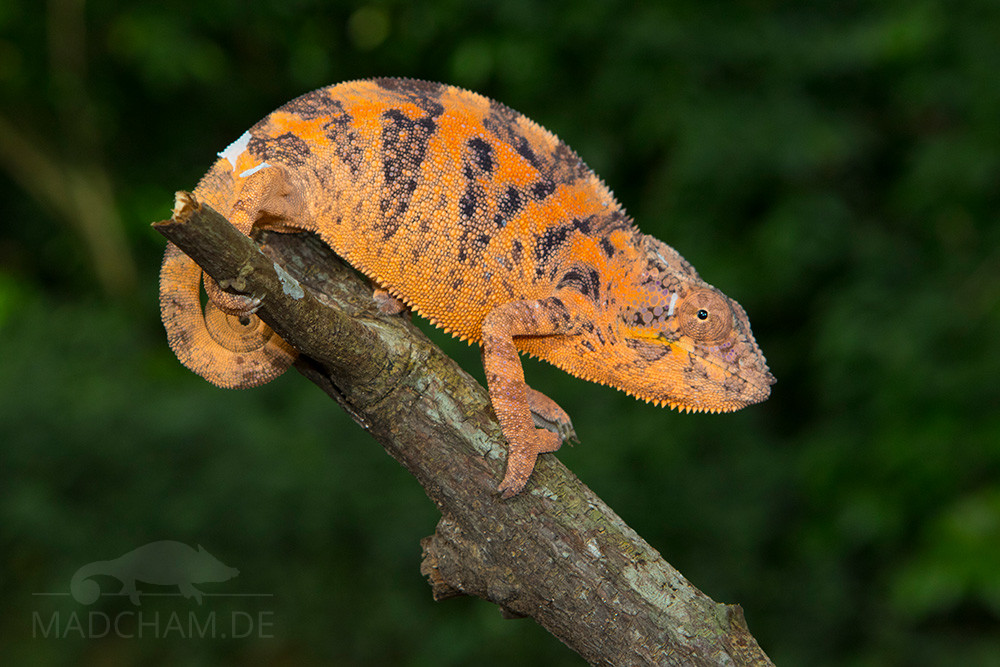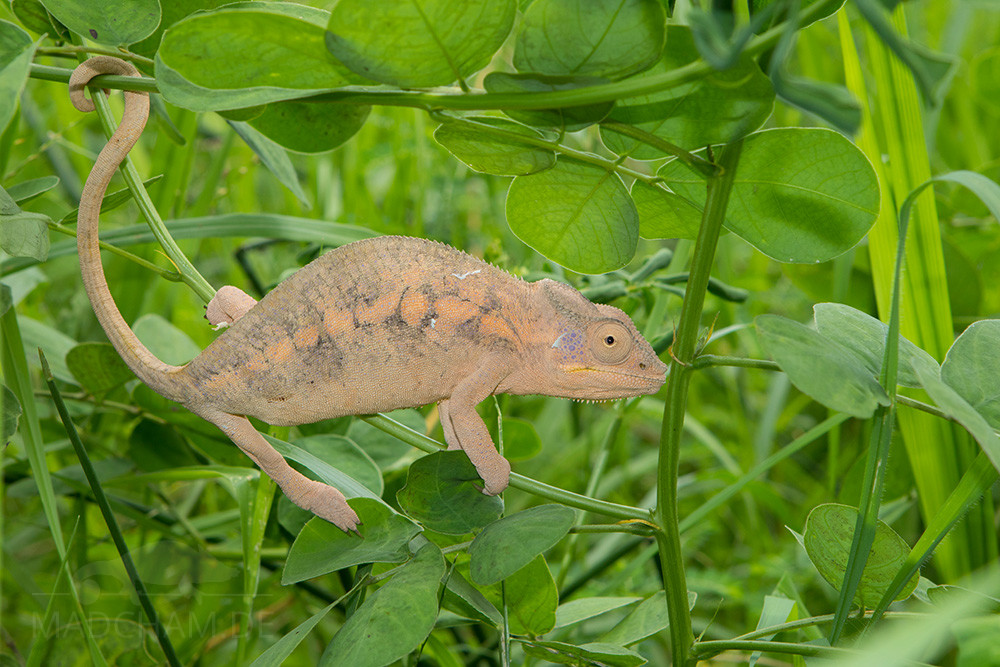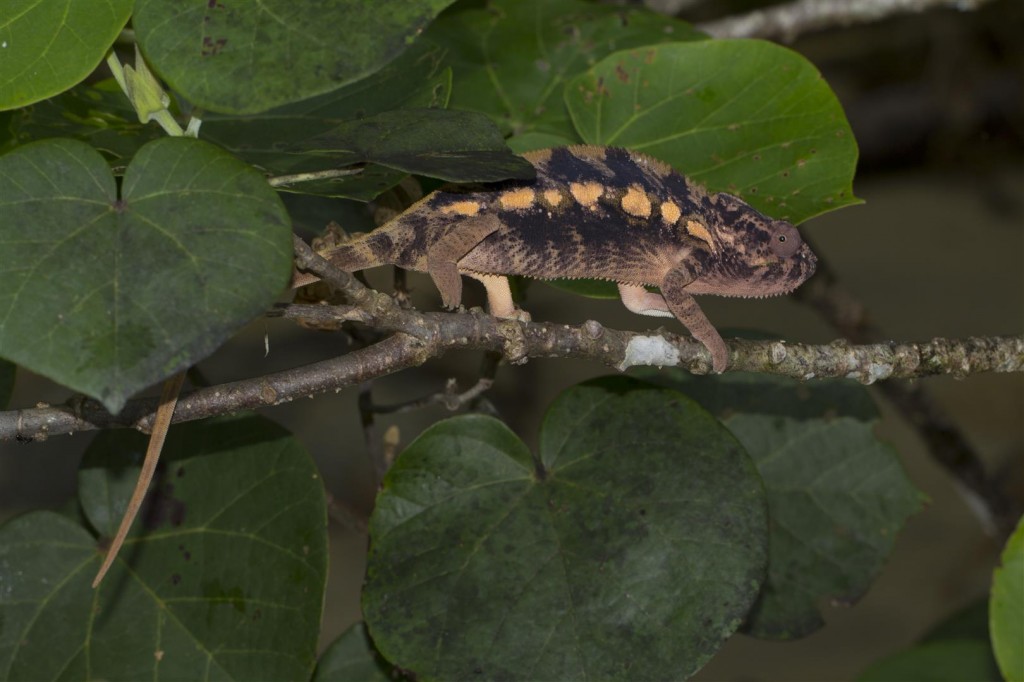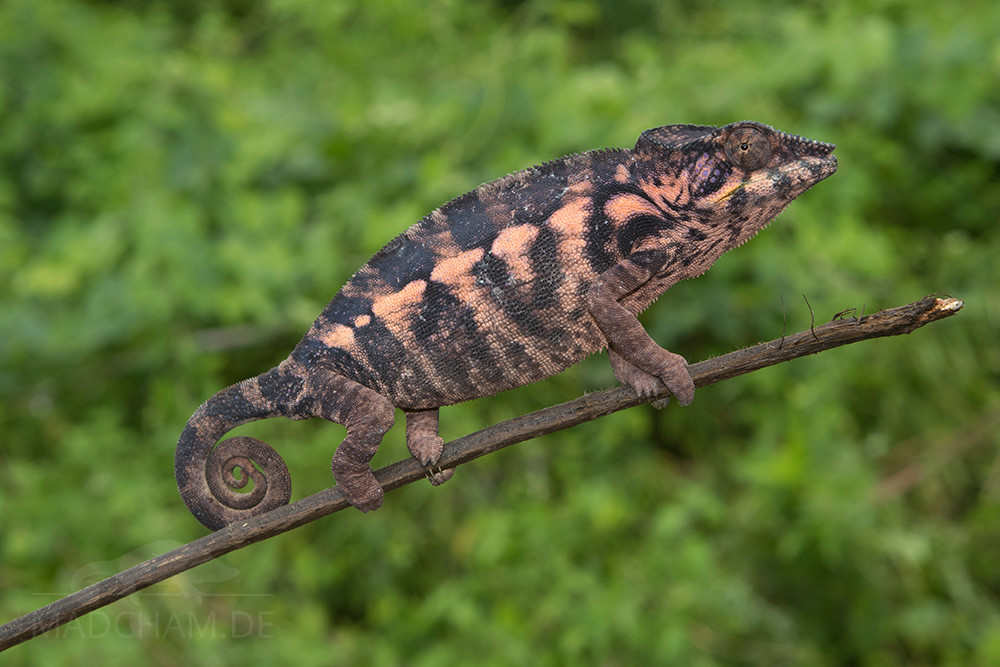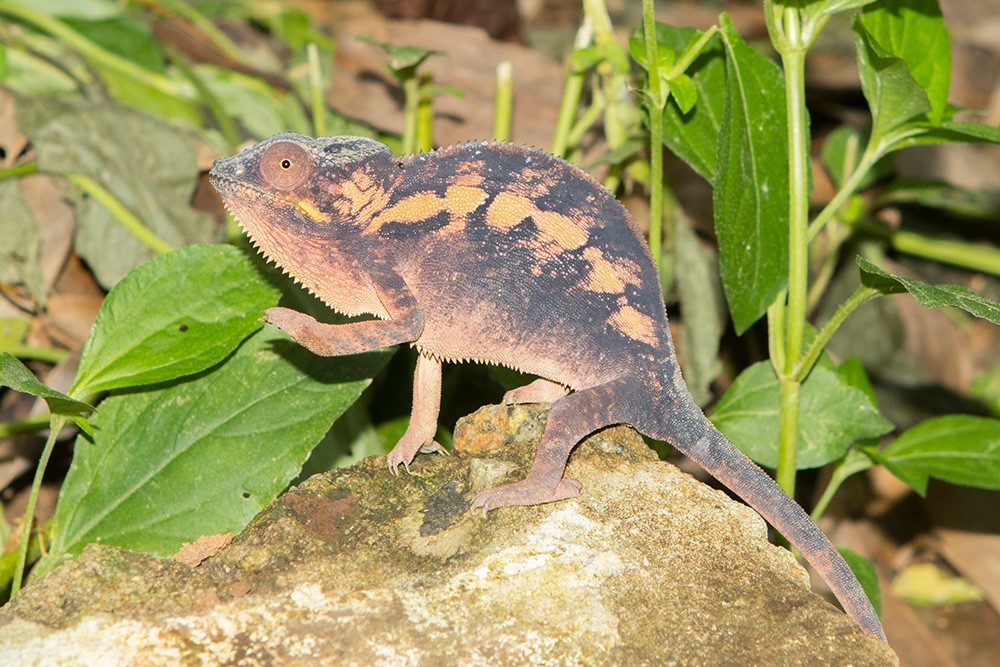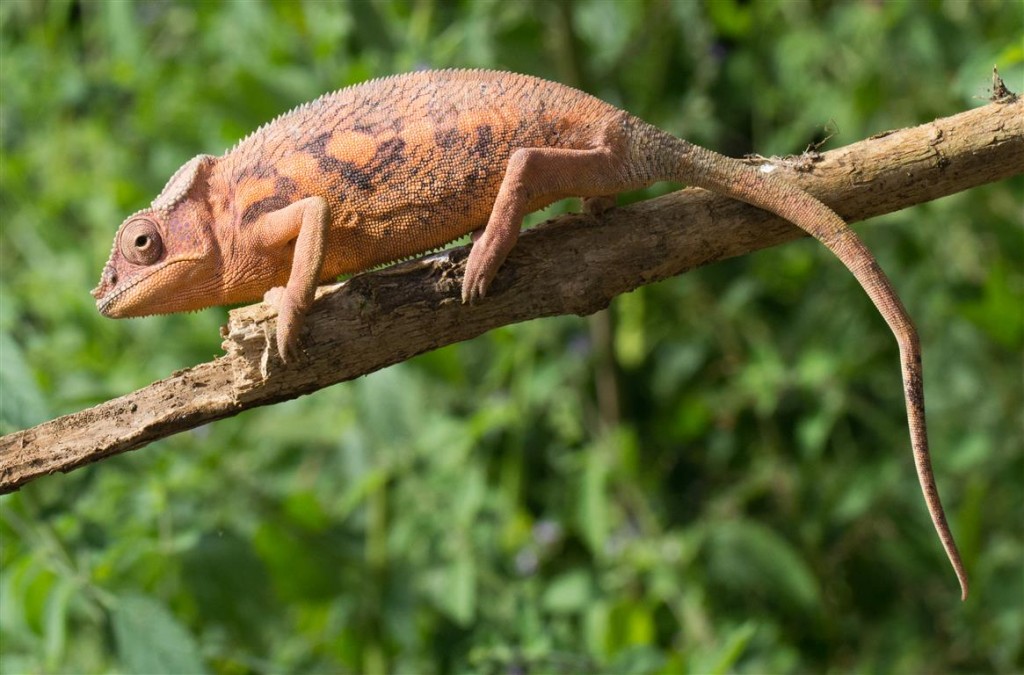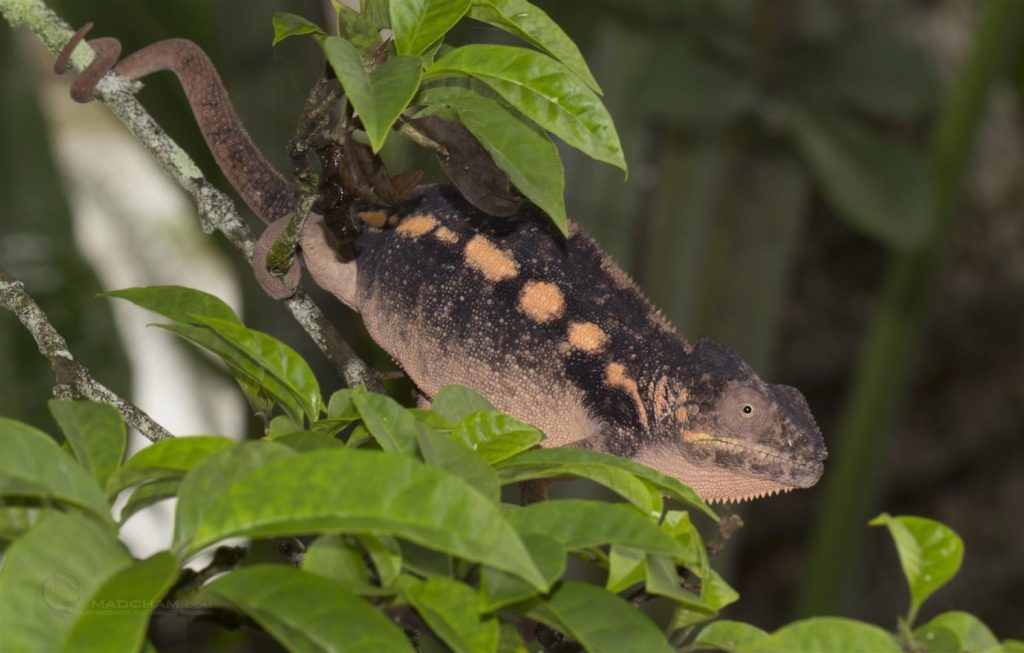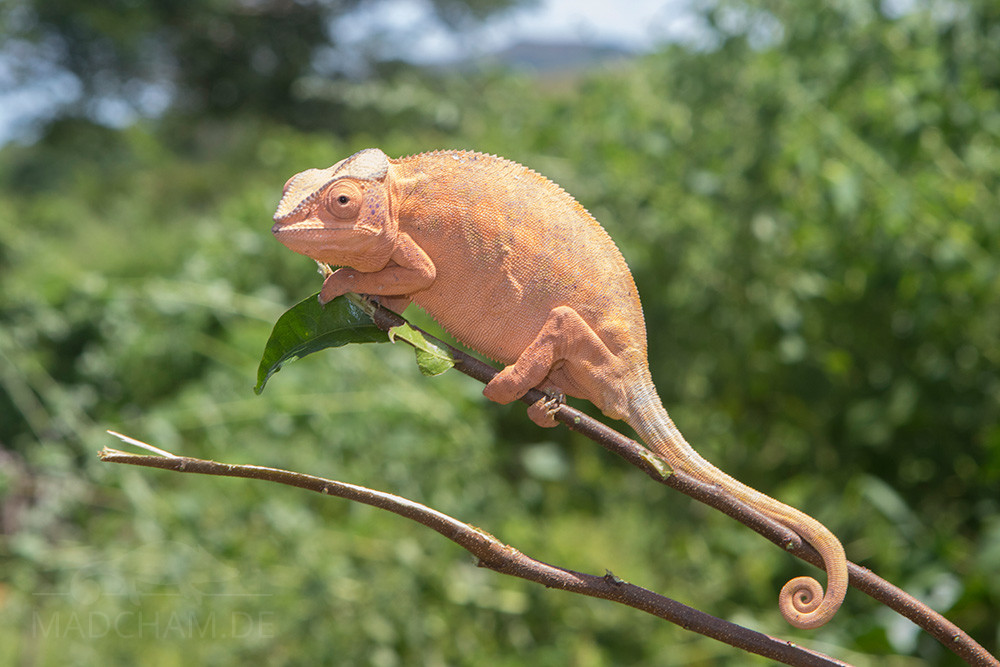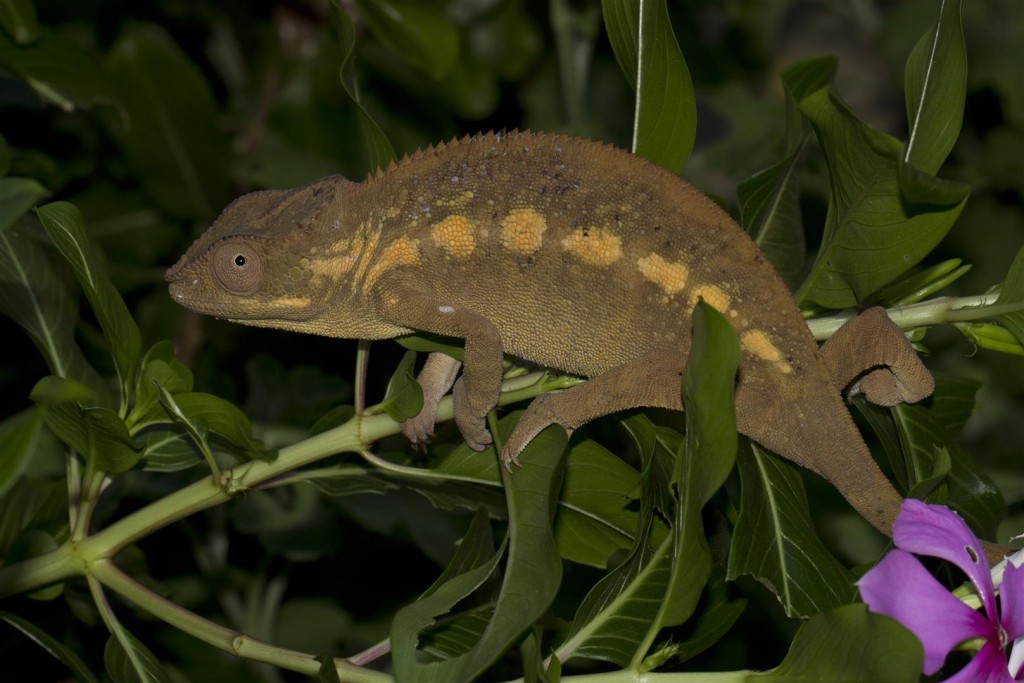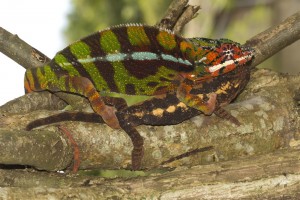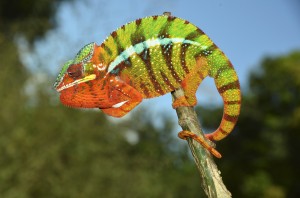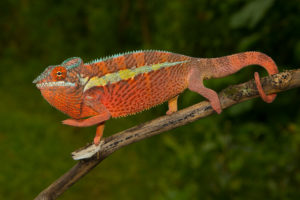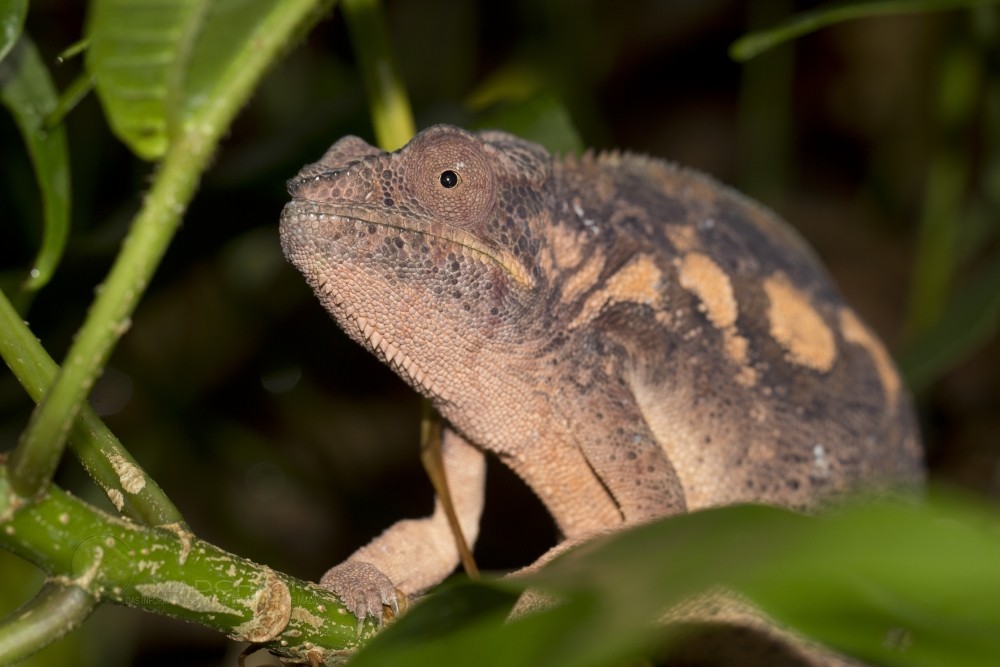
There are some questions we have been asked again and again, so we set up this page to collect all those. If you think there might be more questions, we would be glad to receive an e-mail from you. To jump directly to the answers just click on your question.
I have a male panther chameleon. Can you please determine his local form?
I have a female panther chameleon. Can you please determine her local form?
Where do you get your pictures from?
Why looks local form XY in your pictures different than it looks in captivity?
Is it possible that panther chameleons of different local forms mate?
Do different local forms mate in Madagascar?
Can you determine whether a panther chameleon comes from the east or west coast depending on its color bars?
Which locale are Uii, Picasso, Blue Diamond, Ampiskiana, Orana Mena, Purple Rain…?
What means “blue bar” or “red bar” in panther chameleons from Ambilobe?
What is the difference between a local form and a color morph?
I have a male panther chameleon. Can you please determine his local form?
No. Mixtures between local forms can look very similar to “pure” local forms. If you are not sure about the origin of your panther chameleon, better relinquish breeding this individual or only sell the offspring explicitly as “possible mixture of several local forms”. Buying chameleons is a matter of trust. So we can only recommend avoiding obviously dubious sources, strange vendors and buying an animal although information about the local form remains unclear! Despite the fact that some local forms have a very characteristic look, we have to admit that a determination of the local form of a panther chameleon is not doubtless possible without any sure information about its origin.
I have a female panther chameleon. Can you please determine her local form?
No. There is no possibility to assign a female panther chameleon to her real local form if not already known while buying the animal. Neither cheek color nor size, body coloration, crests or other features help to identify the locale. Until now, we have been finding panther chameleon females in all habitats of Madagascar. Some looked extremely similar to females found several hundred kilometers away, and others look different sitting only a few meters away from each other in the same area. Buying a female thus is an even bigger matter of trust than buying a male specimen. As an example, look at these pictures from different females from different distribution areas in Madagascar.
Where do you get your pictures from?
All our pictures were taken by ourselves and come directly from the habitat of the animals in Madagascar. None of the photos in our section “chameleon & habitat data” contains an animal in captivity. These are – without any exception – all photographs taken in the wild in Madagascar.
Why does local form XY in your pictures look different than it looks in captivity?
In the case of many local forms, we strongly doubt the imported panther chameleons have ever been taken from the named locality (e.g. Nosy Mangabe, Cap Est, Masoala). Mostly, these are simply animals of other local forms, sold under wrong names to raise the prices. Additionally, animals taken out the wild for export from Madagascar are usually very colorful and come from areas easy to access, which means the coloration of captive kept panther chameleons does not always match the real circumstances in Madagascar. In females, you also have to trust the exporter that the bought specimen does exactly come from the named local form (see the question I have a female panther chameleon. Can you please determine her local form?) . This way it may even happen that local forms are mixed unintentionally in captivity.
Is it possible that panther chameleons of different local forms mate?
Of course, it is possible that different local forms mate because it is always the same species, Furcifer pardalis. But in our opinion, you should then definitely say it when selling “mixed” local forms’ offspring.
Do different local forms mate in Madagascar?
No, usually not. Most locales are separated from others by natural barriers (rivers, lakes, the sea, mangroves, areas cleared by slash-and-burn agriculture). Occasionally it may happen that a panther chameleon migrates further away than others and comes into the distribution area of another neighboured locale by accident. But these single panther chameleons have surely no influence on the basic coloration of a complete local form. We explicitly do not share the idea that many panther chameleons are displaced by humans and that native people make local forms mix up or change in colors this way. Most Madagascans won’t touch a chameleon, and additionally have neither interest in nor opportunity to drive or carry around animals. Still today, Madagascar is a developing country with high poverty. Each year again we experience that people in Madagascar avoid chameleons rather than liking them, and this fact has not been changing for years. Likewise, exporters who let people catch and transport chameleons in Madagascar have no interest in releasing those animals in another place again.
Can you determine whether a panther chameleon comes from the east or west coast depending on its color bars?
No. U and Y as well as V shaped lateral bars occur at both coasts in Madagascar. We also found animals in Madagascar yet that had a U on one side of the body and a Y on the other side. Although the idea of distinguishing the coast locales may sound nice and is described in some books, it does unfortunately not work in reality.
Which local forms are Uii, Picasso, Blue Diamond, Purple rain, Orana mena, Ampiskiana, Blurple…?
“Uii” was a panther chameleon male (local form Ambilobe) from a German breeder, who does not keep chameleons anymore since 2008. This chameleon died being only a few years old, so there is no chance direct offspring from him still exists up to date. The breeding line named after him could also be “Kevin line” if the beautiful male, in the beginning, would have been called Kevin. Since, as already said, there exist no sons of this individual nowadays anymore, we think it is useless to name panther chameleons after their great-great-great-grandfather still today. “Picasso” instead is not even the name of a distinct animal, but a term for especially pretty colored panther chameleons, which was introduced by a meanwhile deceased Dutch dealer (who lived in Madagascar) as an export name. In the meantime, this and other invented names simply have been shown to sell better than old known local form names. “Blue Diamond” is also a selling term for animals of a common locale, mostly Ambanja, that show more blue color than others. Just like “True Blue” is used for some panther chameleons of the local form Nosy Be. But all their life, panther chameleons can change strongly in coloration, so actually these terms make no sense. “Orana mena” is a nickname for mainly panther chameleons from Nosy Faly that show a lot of red dots. “Orana” is the Malagasy word for “rain” and “mena” simply means “red”. The locale of “Ampiskiana” is also no distinct village, river, or other local names in Madagascar. Where the animals imported under this name originally came from remains a mystery of the exporter.
Besides these, there are some breeders especially in the U.S., that deliberately mix different locales to get a more intense or special color. This “color variants” often get new names invented by the breeder such as “Blurple”. Those panther chameleons have nothing to do with natural local forms occurring in Madagascar. Everyone has to decide for him-/herself if he or she likes them or not. But what you should take home as a message is that these animals are not part of a newly discovered or very special local form, but human-made “mixes” between different local forms to get a more striking color. We – personally – think this should be clearly stated when selling such chameleons, too. Here, the term “color morph” would be more appropriate, because it is no longer a matter of naturally occurring local forms. An interesting article on the subject of colour morphs in the USA can be read at iPardalis.
What means “blue bar” or “red bar” in panther chameleons from Ambilobe?
These terms only describe the look of a distinct individual. “Blue bar” means the animal has mainly blue colored bars, “red bars” means mainly red-colored stripes. Meanwhile, even abbreviations such as “YBBB” for “yellow body, blue bars” or “RBBB” for “red body, blue bars” show up. To our minds, these labels are nonsense, because panther chameleons from the same clutch can show blue and red bars, and even single males can change from one to the other during their lifetime. Sadly, especially beginners in keeping panther chameleons are often told that one of these colorations might be more popular, rarer, or would have any other promotional character. But in the end, you buy a panther chameleon of the same locale, Ambilobe, under both terms.
What is the difference between a local form and a color morph?
Local forms are the natural color varieties of male panther chameleons, as they occur in nature in Madagascar. Color morphs are targeted color bred panther chameleons in the terrarium, i.e. outside Madagascar. Color morphs are bred for example for a particularly bright blue all over the body or another preferred trait. For this purpose, partly pure local forms are strongly inbred as well as different local forms are crossed. The colors of color morphs do not exist in the wild in Madagascar. Therefore one should not “assign” these color morphs to any local form. They are man-made creations, color morphs, which have nothing to do with the local forms on Madagascar.

